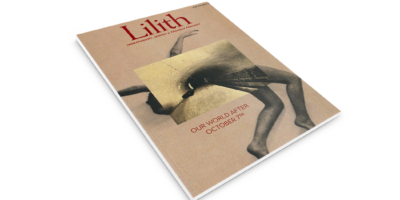
“The Man Who Got Her Pregnant Was Never Even Named”
I’ve always set my novels in New York City, where I was raised, and where, with brief exception, I’ve lived my entire life. This was less of an active decision than a default position. New York was familiar, New York was easy. I knew the nuances of the neighborhoods, the traffic patterns, the sounds of the birds, all without having to reach or stretch. But at a certain point, this very familiarity began to chafe, and I decided to expand my horizons. I settled on New Hampshire as the locale for my new novel, The House on Primrose Pond, because my husband is a New Hampshire native, and over the years, we’ve spent a good bit of time there. I wanted a place with which I was familiar, a place I could easily bring to life—because place does function as a character in a novel—and NH fit the bill.
 I already had my two main characters in mind—Susannah Gilmore (it had been Goldblatt, and changed by her grandfather Isaac) and her older neighbor, Alice Renfew. But somehow I wanted more, something big and cataclysmic that was connected to the state of New Hampshire that would, in some as-yet-to-be-revealed-to-me way, resonate with these characters and the particular challenges they faced. So I typed the words “New Hampshire tragedy” into Google, thinking I might find a flood, a fire, or a storm of epic and Biblical proportions.
I already had my two main characters in mind—Susannah Gilmore (it had been Goldblatt, and changed by her grandfather Isaac) and her older neighbor, Alice Renfew. But somehow I wanted more, something big and cataclysmic that was connected to the state of New Hampshire that would, in some as-yet-to-be-revealed-to-me way, resonate with these characters and the particular challenges they faced. So I typed the words “New Hampshire tragedy” into Google, thinking I might find a flood, a fire, or a storm of epic and Biblical proportions.
Instead, I found a book entitled Hanging Ruth Blay: An Eighteenth Century New Hampshire Tragedy. I was hooked even before it arrived, with two-day expedited shipping, from Amazon. And when it did show up, I devoured Blay’s story with measure of fascination and horror, and knew that I had incorporate these eighteenth-century events into the contemporary story of Susannah and Alice.



